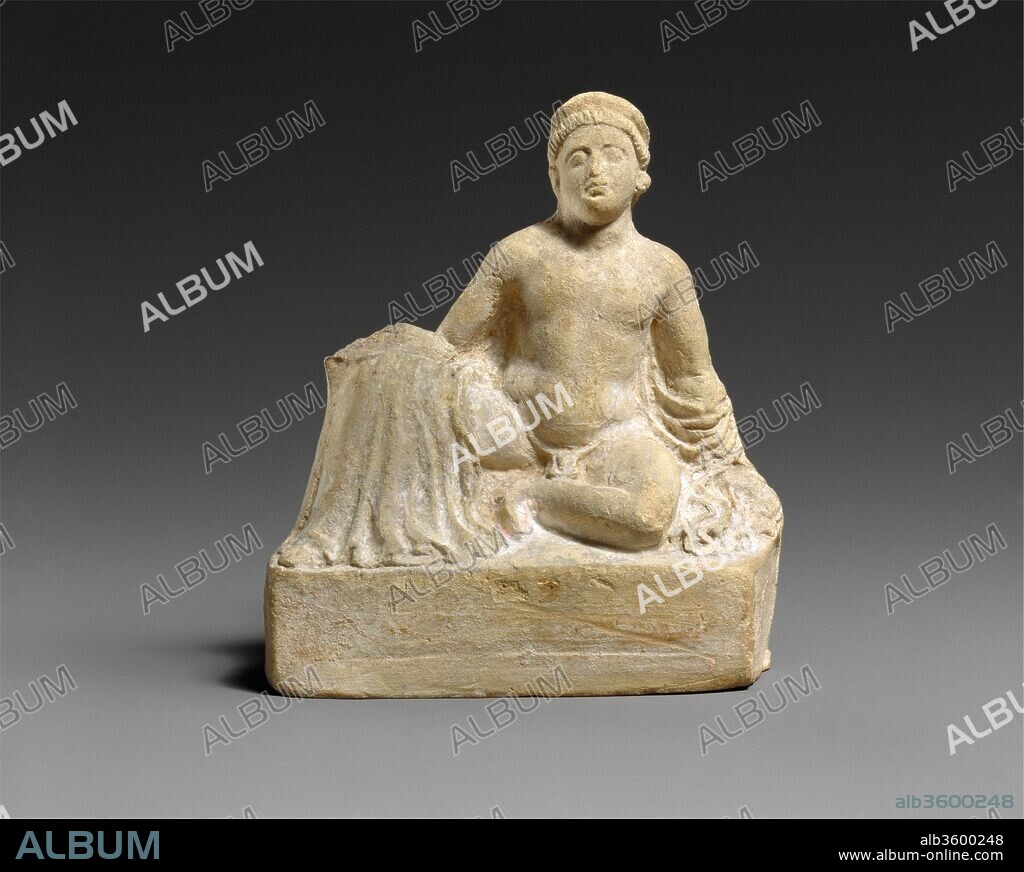alb3600248
Terracotta statuette of a "temple boy"

|
Zu einem anderen Lightbox hinzufügen |
|
Zu einem anderen Lightbox hinzufügen |



Haben Sie bereits ein Konto? Anmelden
Sie haben kein Konto? Registrieren
Dieses Bild kaufen.
Nutzung auswählen:

Titel:
Terracotta statuette of a "temple boy"
Untertitel:
Automatische Übersetzung: Terrakotta-Statuette eines "Tempeljungen". Kultur: zypriotisch. Abmessungen: H.4 3/4 in. (12,1 cm). Datum: 3. Jahrhundert v. Votiv-"Tempeljungen"-Figuren sind häufiger in Kalkstein zu finden, und kleine Terrakotta wie diese sind relativ selten. Der Zweck der Figuren wurde unterschiedlich interpretiert, aber es scheint wahrscheinlich, dass sie in Tempeln aufgestellt wurden, um einen Übergangsritus im Leben des Jungen zu markieren und ihm göttlichen Schutz zu sichern. Aber was auch immer die Bedeutung der Figuren sein mag, es ist klar, dass sie einen zypriotischen Brauch darstellen, der nicht aus der griechischen Welt, sondern aus der des Nahen Ostens stammt.
Terracotta statuette of a "temple boy". Culture: Cypriot. Dimensions: H. 4 3/4 in. (12.1 cm). Date: 3rd century B.C..
Votive "temple boy" figures are more common in limestone, and small terracotta such as this are relatively rare. Various interpretations have been put on the purpose of the figures, but it seems likely that they were placed in temples to mark a rite of passage in the boy's life and secure for him divine protection. But, whatever the meaning of the figures, it is clear that they represent a Cypriot custom that drives not form the Greek world but form that of the Near East.
Technik/Material:
Terracotta; mold-made
Zeitraum:
Early Hellenistic
Museum:
Metropolitan Museum of Art, New York, USA
Bildnachweis:
Album
Freigaben (Releases):
Bildgröße:
4192 x 3354 px | 40.2 MB
Druckgröße:
35.5 x 28.4 cm | 14.0 x 11.2 in (300 dpi)


 Pinterest
Pinterest Twitter
Twitter Facebook
Facebook Link kopieren
Link kopieren Email
Email
